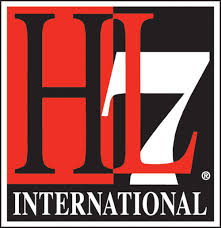HL7 Publishes First Domain Analysis Model for Clinical Sequencing
Model captures precision medicine's use cases and informs design of FHIR genomics
Ann Arbor, MI, USA - April 10, 2017 - Health Level Seven International (HL7), the global authority for interoperability in healthcare information technology and the home of the Fast Healthcare Interoperability Resources (FHIR) standard, today announced that it has published the HL7 Domain Analysis Model; Clinical Sequencing, a model which captures precision medicine's use cases to facilitate interoperability of genetic and genomic data. This domain analysis model (DAM) was the basis for the design of FHIR Genomics, the genomics components designed under purview of the HL7 Clinical Genomics Work Group within FHIR Release 3. The DAM has also served as the foundation for underlying use cases selected for the Sync for Genes (www.sync4genes.org) program.
 The Clinical Sequencing DAM describes clinical genomics use cases in clinical settings today, including relevant stakeholders, standards and workflow diagrams which help to illustrate the testing and decision making process and the manner in which orders and information is exchanged between patients, clinicians, laboratory technicians, geneticists, EHRs and government agencies. It catalogs clinical scenarios, discusses current challenges and lessons learned, and raises questions to consider for standards-based implementations.
The Clinical Sequencing DAM describes clinical genomics use cases in clinical settings today, including relevant stakeholders, standards and workflow diagrams which help to illustrate the testing and decision making process and the manner in which orders and information is exchanged between patients, clinicians, laboratory technicians, geneticists, EHRs and government agencies. It catalogs clinical scenarios, discusses current challenges and lessons learned, and raises questions to consider for standards-based implementations.
The HL7 Domain Analysis Model: Clinical Sequencing should be a boon for multiple stakeholders seeking to understand and implement precision medicine with HL7 standards via the Sync for Genes program, or on their own," said Gil Alterovitz, PhD, co-chair, HL7 Clinical Genomics Work Group and a Harvard professor with the Computational Health Informatics Program/Boston Children's Hospital. Dr. Alterovitz also co-led the Domain Analysis Model: Clinical Sequencing publication.
The DAM will help analysts and developers incorporate genomic data in clinical care and translational research IT environments. It will also help standards developers extend support of clinical sequencing, and identify existing gaps and extensions. The publication's 20 stakeholder categories range from reference laboratories to molecular pathologists, and scenarios include: specimen identification, germline testing, cancer profiling - somatic testing, decision making tools - family history and drug dosage calculators, public health reporting, data warehouses, cytogenetic marker identification via sequencing, pharmacogenomics, state and regional health information exchanges (HIE), and human leukocyte antigen (HLA) typing. The DAM also contains sections that recommend nomenclature, terminology, reference knowledge databases, vocabulary constraints, and existing HL7 clinical genomics specifications.
The HL7 Domain Analysis Model: Clinical Sequencing is available for download from the HL7 website at: http://www.hl7.org/implement/standards/product_brief.cfm?product_id=446.
About Health Level Seven International (HL7)
Founded in 1987, Health Level Seven International is the global authority for healthcare information interoperability and standards with affiliates established in more than 30 countries. HL7 is a non-profit, ANSI accredited standards development organization dedicated to providing a comprehensive framework and related standards for the exchange, integration, sharing, and retrieval of electronic health information that supports clinical practice and the management, delivery and evaluation of health services. HL7's members represent approximately 500 corporate members, which include more than 90 percent of the information systems vendors serving healthcare. HL7 collaborates with other standards developers and provider, payer, philanthropic and government agencies at the highest levels to ensure the development of comprehensive and reliable standards and successful interoperability efforts.
For more information, please visit: www.HL7.org.
Contact:
Andrea Ribick
+1 (734) 677-7777
[email protected]
- Tags:
- cancer profiling
- Clinical Sequencing DAM
- cytogenetic marker identification via sequencing
- data warehouses
- decision making tools
- domain analysis model (DAM)
- drug dosage calculators
- electronic health records (EHRs)
- Fast Healthcare Interoperability Resources (FHIR) standard
- FHIR genomics
- genomic data in clinical care
- germline testing
- Gil Alterovitz
- Health Level Seven International (HL7)
- healthcare information technology (HIT)
- HL7 Clinical Genomics Work Group within FHIR Release 3
- HL7 Domain Analysis Model Clinical Sequencing
- human leukocyte antigen (HLA) typing
- interoperability
- pharmacogenomics
- precision medicine
- public health reporting
- somatic testing
- specimen identification
- standards-based implementations
- state and regional health information exchanges (HIE)
- Sync for Genes
- translational research IT environments
- Login to post comments